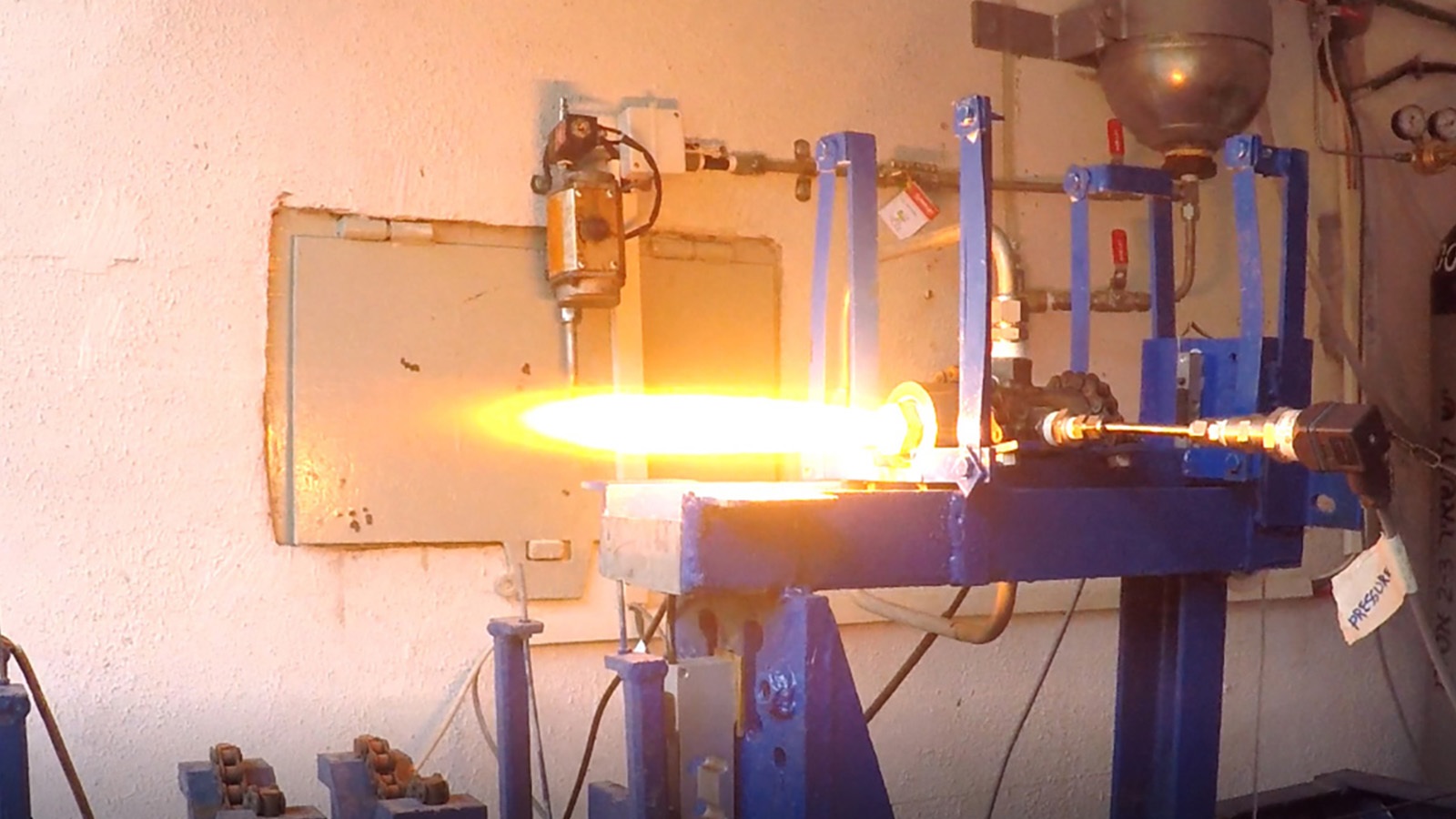Stay Up to Date
Submit your email address to receive the latest industry and Aerospace America news.
The Hybrid Rockets Technical Committee studies techniques applied to the design and testing of rocket motors using hybrid rocket systems.
Researchers at Utah State University’s Experimental Rocketry and Propulsion Laboratory developed a low-erosion nozzle system by leveraging the anisotropic thermal conduction properties of two synthetically derived materials. Between January and May, the researchers designed materials that give their nozzle throat, fabricated from pyrolytic graphite, a high-thermal conductivity radially and a low conductivity axially. The conduction axes for the surrounding boron nitride insulator were arranged perpendicularly to the throat, thus leading to effective radial insulation. As such, heat from the motor plume conducted away from the nozzle throat and into the high-heat-capacity boron-nitride insulating layer. Two dozen tests were performed with different motor prototypes. When compared to a monolithic-graphite nozzle under identical burn conditions, the low-erosion system exhibited a fivefold decrease in erosion rate. A third-generation nozzle system that replaces the boron-nitride insulator with carbon-reinforced-epoxy-composite was also developed and shown to produce erosion rates that are approximately 20% higher with better thermal stress resistance.
Researchers at the Fine Rocket Propulsion Center of Technion-Israel Institute of Technology published in January the results of a breakthrough in hybrid rocket conceptualization. They built a novel concept of a ducted, water-augmented, hybrid-gas generator rocket for high-speed underwater propulsion. This motor is augmented by a water stream that can enter the chamber through an inlet channel and then course its way to the mixing chamber. The underwater stream is naturally aspirated due to the motion of the vehicle. In this manner, incoming water can mix with the hot products and evaporate, thus generating a higher mass flow exhaust jet. In February, these researchers demonstrated through thermochemical calculations as well as static firing tests of an oxygen-polyester hybrid gas generator that the mere addition of water can increase the thrust and specific impulse by as much as 70%. Experiments conducted in June to August showed that by adding to the fuel 30% aluminum particles the thrust and specific impulse can be increased by over 100%.
Members of the Stanford Propulsion and Space Exploration Group continued to study multidimensional flame propagation effects on hybrid fuels using slab samples of poly (methyl methacrylate), acrylonitrile butadiene styrene and polycarbonate in gaseous oxygen. In July, they published their results for a small-scale poly (methyl methacrylate)/gaseous oxygen motor with a transparent combustion chamber; the latter was modified with a laser igniter to permit ignition at any location along the motor axis. The block of fuel, which also served as the combustion chamber, was augmented by a blackened fuel on the port surface to absorb the energy from the laser and to provide the spark needed for ignition. This modification allowed the characterization of flame ignition dynamics during the initial combustion transients. Preliminary studies validated this design and demonstrated linear flame propagation rates from ignition stations located at the halfway point of the fuel port.
Turkey announced its plan to land a hybrid rocket on the moon by 2023; its program started with the founding of Delta V Space Technologies and the first testing of a hybrid rocket in April. In May, Vaya Space, a Florida-based hybrid propulsion and orbital launch provider, announced its intention to create a Brazilian subsidiary. Also in May, HyImpulse conducted a test series of its paraffin-liquid oxygen hybrid engine at the Shetland Space Centre in Scotland. Meanwhile, the German Aerospace Center continued its hybrid engine developments with the Compass and HyFIVE-2/3 rocket series. Along similar lines, companies such as Nammo, TiSpace, Gilmour Space, T4I, SpaceForest and SpaceLink, continued to develop and promote hybrid rocket technologies involving paraffin-based, HTPB and 3D-printed acrylonitrile butadiene styrene fuels.
Contributors: Brian J. Cantwell, David Dyrda, Alon Gany, Mario Kobald, Veronika Korneyeva and Stephen A. (Tony) Whitmore
Stay Up to Date
Submit your email address to receive the latest industry and Aerospace America news.




